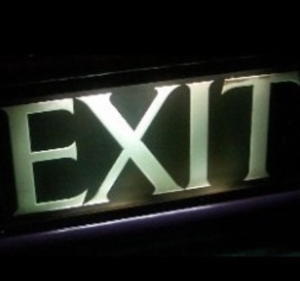Scottish Cinemas and Theatres
Bathgate
19-21 George Place

Earliest
intact survivor of the George Green chain of cinemas. An early example
of a work by John Fairweather, it is a good, largely unaltered example
of cinemas of the period just after the first world war, and before the
developments towards modern streamlined design. The Bathgate Pavilion opened 25th March 1920, replacing an earlier cinema run by George Green in the town. This older cinema, the 1913 Picturehouse, had been converted from a roller skating rink, when Green’s first decided to set up a permanent cinema in the town (this family of show-folk had taken early to cinema exhibition). The replacement building, in George Place, was typical of cinemas of the period. Archive image courtesy of Ian Hossack The proscenium is tall, with straight sides, and a curved archway above. It is flanked by two archways, with carved decorative panels within. The side walls are largely plain, broken up by a series of pilasters with decorative tops. One wall features a series of square decorative panels between these; the other has windows covered by shutters in the same positions. Windows were often a feature of earlier cinema auditoria, opened between performances to allow fresh air and daylight into the auditorium. The small balcony has a flat front, and is flanked on either side by a theatrical-style false box and blank archway (partially pierced on one side to give a view from an office into the auditorium). Closed as a cinema in 1967; Now a bingo hall. It was listed Category C(s) by Historic Scotland in 2008
|
North Bridge Street

The Regal cinema in Bathgate opened in 1938, seating 1067, and is in exterior form very much as originally built. The fenestration is also still there. The building is a fine symmetrical Art Deco composition with classical overtones. The front consists of three bays the outer two protrude forward so as to create a recessed entrance area underneath the balcony between them. The fenestration in the central bay as well as the side wings adds a vertical emphasis to this otherwise very solid and square building. The
interior has undergone some changes, to allow the building to be
adapted for community use. Despite this there are a wealth of original
features that remain; the entrance foyer space has excellent terrazzo
flooring, finely detailed ‘coming soon’ panels as well as original
plasterwork at cornice level and around the edge of the ceiling. The
upper foyer has retained its beautiful stained glass windows as well.
In the auditorium there is the original plasterwork surround to the
proscenium still in place although it is covered on the sides by what
appears to be plasterboard at the moment. The ceiling still retains its
coffering and plasterwork Art Deco detailing. But
most importantly and of great interest are the large fibrous
plasterwork panels with integrated grillwork on the splay walls above
the side exits created by John Alexander. They depict a nude chariot
rider driving his horse into the sky. The controversy of this theme
delayed the cinemas opening by several days while it was determined if
such images were acceptable in a public place. The only other cinema in
the UK to retain plasterwork by Alexander is the Grade II listed
Northwick Cinema in Worcester, making the Regal building of far more
than just local interest. It is the finest remaining cinema by prolific Leven-based firm of AD Haxton. |
The proscenium was 30 feet wide, and the stage 28 ft deep. Cinemascope was fitted in 1955.
The building was C(s)-Listed by Historic Scotland in 1999, and this was upgraded to Category B in 2008.
 |
Many original decorative features are still intact inside - for some examples, see the gallery of interior photos available here, courtesy of Bill Matthews. |
| A photo by Graham Kelly of the exterior undergoing renovation work in 2003 is here. |  |
External Links:
The Regal features panels designed by John Alexander - these can be seen being produced on the RCAHMS website here.
CANMORE features almost the entire plans of the building here.
Corn Exchange / New Public Hall

Image c.1907 courtesy of Ian Hossack
Built as the Corn Exchange in 1857/58.
Refurbished in 1906/07 by Robert Russell, who added a stage, dressing rooms and a balcony.
Every type of function took place in the building and in the early 1900s it was used for
cinematographic displays of The Boer War and the showing of lantern slides.
Cinema Picturehouse / Picture Playhouse
Livery Street

o.1913. Converted from roller-rink, with a distinctive turret roof. Later the Locarno Dance Hall (c.1964),
and was demolished in the late 1960s.
Image courtesy of the Cinema Theatre Association Archive (Tony Moss Collection)
Unless otherwise
specified, all photographs and other material copyright (c) 2001
- 2020 Gordon Barr and Gary Painter.
All rights reserved. Permission for use elsewhere normally granted, but please ask first!
No attempt is made to infringe any existing copyrights or trademarks. Please contact the editors in case of any queries.
All rights reserved. Permission for use elsewhere normally granted, but please ask first!
No attempt is made to infringe any existing copyrights or trademarks. Please contact the editors in case of any queries.



